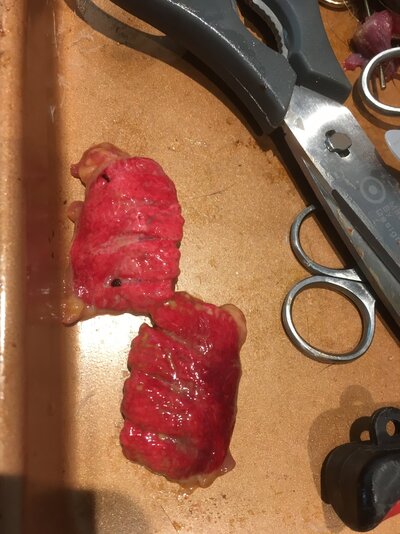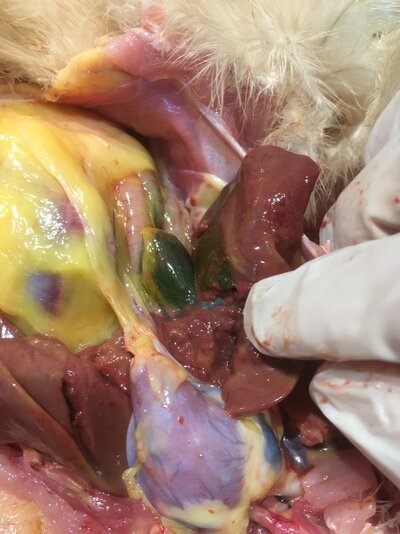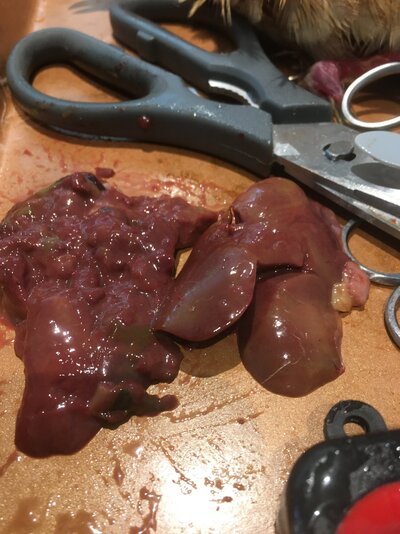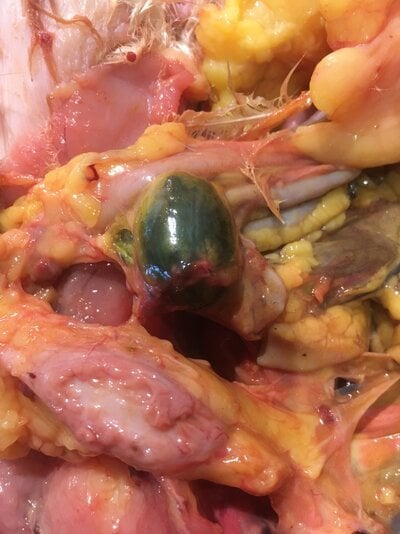Warning, explicit pictures!
I had a chicken recently die of suffocation as she spent a week gaping/gasping for breath. I held a nebulize for oxygen therapy up to to for many treatments which is why she probably lasted so long. She started wheezing but quickly moved to gasping and would raise her head up to take an intake of breath. I put her in the chicken hospital (my bathroom) and she settled in her nest and just working on breathing. I thought she'd pass away day two and day three during the night but she made it through with the heavy intake of breath. No other cold symptoms like watery eyes or sneezing or congestion. Her temperature seemed normal. I thought for sure gapeworm and started treating her day one. I treated her each day until she passed, so seven days. On day three and four she seems better so I let her go outside and she worked at being a normal chicken eating dirt items, greens and water but I brought her back in after just a couple of hours as her wheezing got worse. Day 5 and 6 she didn't come out as her breathing was very labored. I was putting liquefied food and medicine down her throat each day and keeping up her oxygen treatments. She passed away on day 7 during the night.
I have never done a necropsy before but I tired to see if I could see an obstruction of her airway and her esophagus seemed clear all the way down to her lungs. I could only see that one side of her liver was sort of mushy and maybe one lung looked slightly different from the other but I didn't open the lungs up. There were no signs of gapeworm anywhere. I couldn't believe that she kept gasping/gaping even through all her Safe Guard for goats treatment for seven days! I uploaded pictures that I could share if anyone could possibly help me identify what might have killed her. The green bulbous thing was attached to the messy liver. Any ideas?
Thank you.
I had a chicken recently die of suffocation as she spent a week gaping/gasping for breath. I held a nebulize for oxygen therapy up to to for many treatments which is why she probably lasted so long. She started wheezing but quickly moved to gasping and would raise her head up to take an intake of breath. I put her in the chicken hospital (my bathroom) and she settled in her nest and just working on breathing. I thought she'd pass away day two and day three during the night but she made it through with the heavy intake of breath. No other cold symptoms like watery eyes or sneezing or congestion. Her temperature seemed normal. I thought for sure gapeworm and started treating her day one. I treated her each day until she passed, so seven days. On day three and four she seems better so I let her go outside and she worked at being a normal chicken eating dirt items, greens and water but I brought her back in after just a couple of hours as her wheezing got worse. Day 5 and 6 she didn't come out as her breathing was very labored. I was putting liquefied food and medicine down her throat each day and keeping up her oxygen treatments. She passed away on day 7 during the night.
I have never done a necropsy before but I tired to see if I could see an obstruction of her airway and her esophagus seemed clear all the way down to her lungs. I could only see that one side of her liver was sort of mushy and maybe one lung looked slightly different from the other but I didn't open the lungs up. There were no signs of gapeworm anywhere. I couldn't believe that she kept gasping/gaping even through all her Safe Guard for goats treatment for seven days! I uploaded pictures that I could share if anyone could possibly help me identify what might have killed her. The green bulbous thing was attached to the messy liver. Any ideas?
Thank you.








